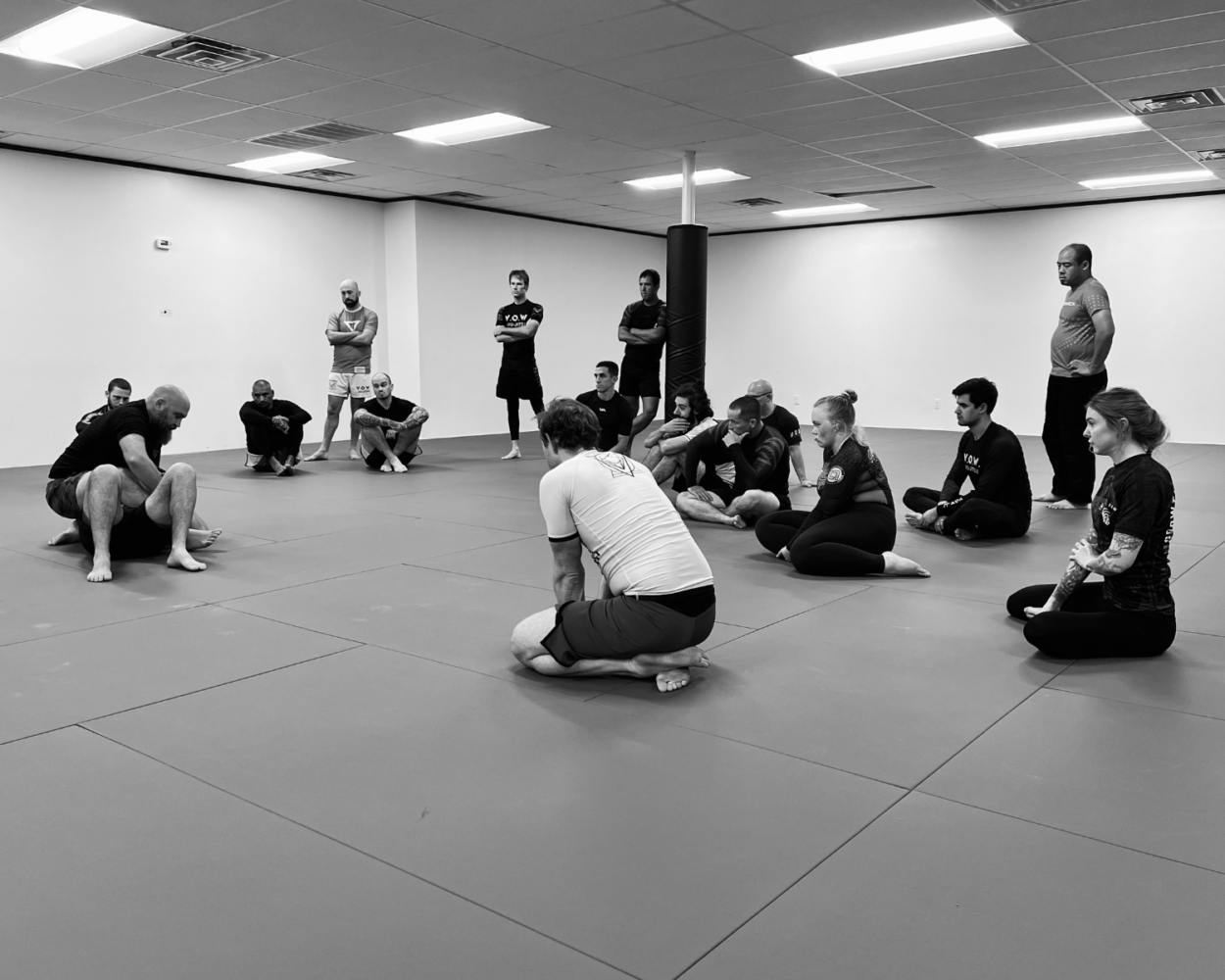What should you focus on as a beginner?
I’m asked this question often. It is commonly said you should focus on defense, which I agree. In fact, focusing on defense will not be a choice, it’s part of the process and that is where you will find yourself most often. Understanding basic principles of how to stay safe and how to escape positionally is the most critical part of Jiu-Jitsu. The more confidence you gain in this area, the more risk you take in trying new things, this is how you develop. You never stop developing your defense, it is the foundation of everything. It is often the case that as you get better, you focus less on this aspect. As you get better, you will be more deliberate with your training, it won’t just be about surviving the round. You can manufacture challenges for yourself. I always recommend advanced guys do this. When’s the last time you had to defend your back or reset your guard for example? Why have the same rolls over and over. Not only does this help you, but it also helps your training partner develop attacks against a skilled opponent. So what should a beginner focus on? You must understand the importance of controlling inside position. Inside position is the space between your hip and armpit. You must also understand inside position of the legs, which I will write about another time. Almost everything we do offensively in Jiu-Jitsu requires control of the inside position. No position can be controlled without this fundamental principle. Almost all submissions require control of the inside position. The next time you’re watching a roll or watching instruction, take notice of where the control and connection is. Even with your takedowns, notice who is controlling the inside position. If a beginner can focus on this fundamental principle in a sparring session, it will dramatically change their game. Things become more orderly in the roll and there seems to be a bit more time to react. It curves the feeling of being completely lost or having no idea what to do. A good place to start and a way to add structure to this idea is using the panda system. The system consists of six positions, each having a purpose during a roll. The underlying principle of all the positions is to maintain control of the inside space while being able to transition safely. The ultimately goal is to – recover and get back to an active offensive position. There is escaping submissions and there’s preventing them, this is preventative. My second recommendation would be to focus on guard development. A good start would be full guard, open half guard, and butterfly guard. Guard is one of the hardest things to learn in Jiu-Jitsu and IS Jiu-Jitsu in a sense. The skill of fighting off your back is unique. Getting hands and feet to work together to destabilize, create angles, sweep, and produce submissions takes a lot of time and focus. This arguably takes more time to develop than any other part of JiuJitsu. This is why I recommend students start now instead of always fighting for top. This doesn’t mean you shouldn’t fight for top, this also takes skill, but top tends to be more comfortable. Make it a point to work your guard during your rolls, focus on specific guards and retention of those guards. Once you gain a level of comfortability, move on to developing new guards. Simply put, my recommendation for beginners is to focus on controlling inside position using the panda system and begin to develop their guard.
 V.O.W. Jiu-Jitsu Blog"
style="object-position: ;"
>
V.O.W. Jiu-Jitsu Blog"
style="object-position: ;"
>
